Clancy Tucker's Blog, page 182
July 10, 2017
11 July 2017 - Sally Morgan - Aboriginal Artist and Writer
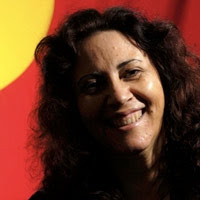
SALLY MORGAN- ABORIGINAL ARTIST AND WRITER -
G'day folks,
Sally Jane Morgan is an Australian Aboriginal author, dramatist, and artist. Her works are on display in numerous private and public collections in both Australia and around the world.
Sally Morgan is recognised as one of Australia's best known Aboriginal artists and writers. She is one of a number of successful urban Aboriginal artists.
Sally was born in Perth in 1951, the eldest of five children. As a child she found school difficult because of questions from other students about her appearance and family background. She understood from her mother that she and her family were from India. However, when Sally was fifteen she learnt that she and her sister were in fact of Aboriginal descent, from the Palku people of the Pilbara.
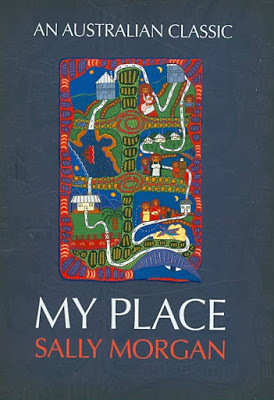
This experience of her hidden origins, and subsequent quest for identity, was the stimulus for her first book "My Place" published in 1987. It tells the story of her self-discovery through reconnection with her Aboriginal culture and community. The book was an immediate success and has since sold over half a million copies in Australia. It has also been published in the United States, Europe and Asia.
Her second book "Wanamurraganya" was published in 1989. It is the biography of her grandfather, Jack McPhee. She has also written five books for children.
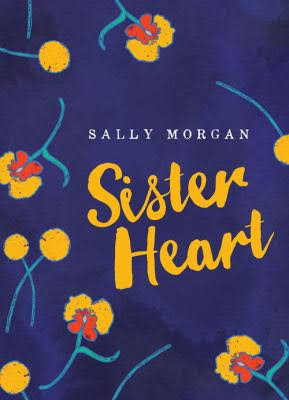
As well as writing, Sally Morgan has established an international reputation as an artist. She has works in numerous private and public collections in Australia and the United States, including the Australian National Gallery and the Dobell Foundation collection. Her work is particularly popular in the United States. Her work as an artist is excellently described and illustrated in the book Art of Sally Morgan, available in our Web shop.
She has received many awards, including from the Human Rights and Equal Opportunities Commission. As a part of the celebration in 1993 of the Universal Declaration of Human Rights, her print Outback was selected by international art historians as one of 30 paintings and sculptures for reproduction on a stamp representing an article of the Declaration.
My Place remains her most influential work, not only because of its very wide popularity but also because it provided a new model for other writers, particularly those of indigenous background.
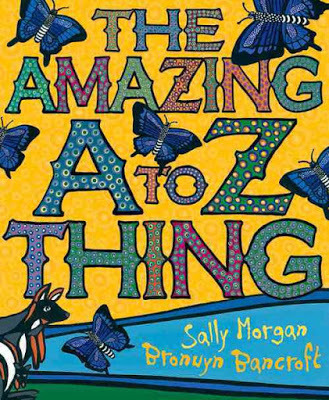
She is currently Director of the Centre for Indigenous History and Arts at The University of Western Australia.

Clancy's comment: Go, Sally!
I'm ...


Published on July 10, 2017 14:20
July 9, 2017
10 July 2017 - MACRO PHOTOGRAPHY
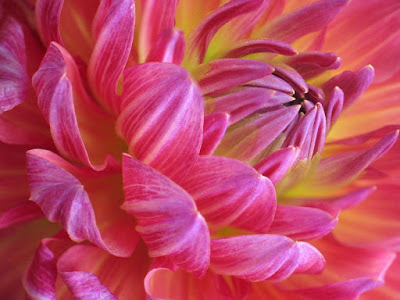
MACRO PHOTOGRAPHY
G'day foks,
I love taking macro photography. You know, getting up close and personal with a flower and finding a few insects busily doing what they do. Here are some samples from other clever photographers.




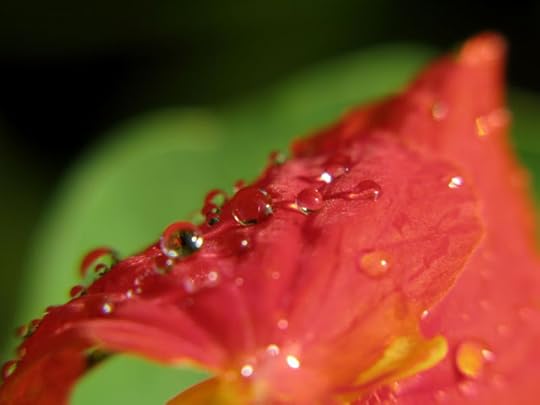


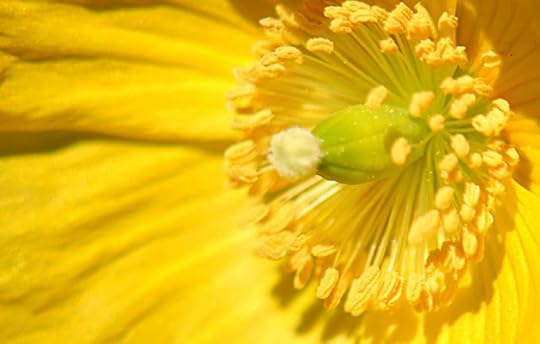



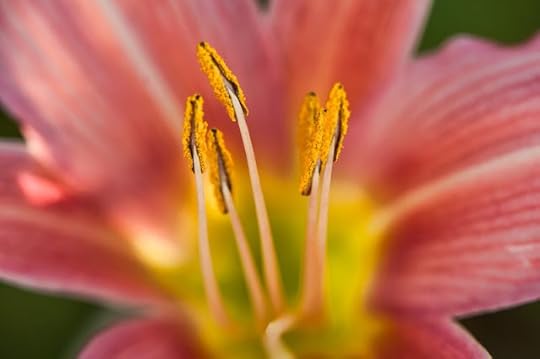
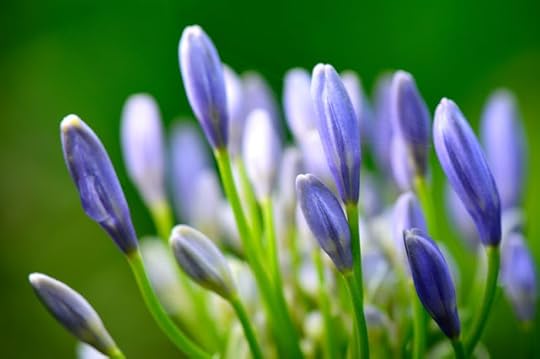

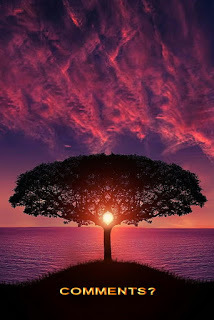
Clancy's comment: Pretty cool, eh? I love to snap things after a shower of rain, or after a frost. You just never know what you will find when you check them out on your computer. Below are some of mine.
I'm ...
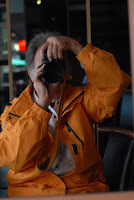



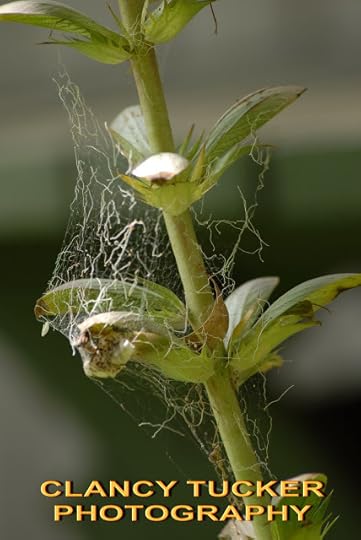
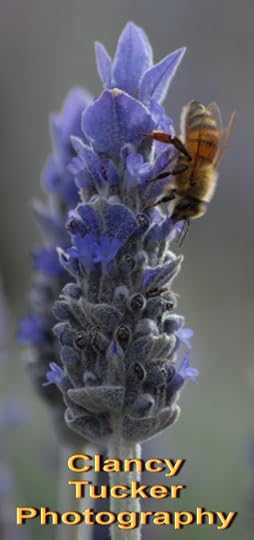
Published on July 09, 2017 14:50
July 8, 2017
9 July 2017 - TED HILL - Guest author
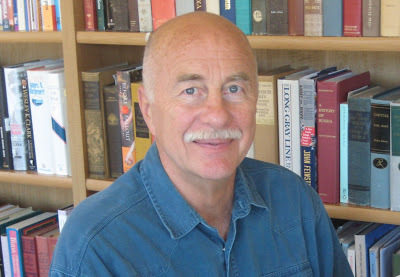
TED HILL
- Guest Author -
G'day folks,
Welcome to my interview with an interesting and smart man.
Welcome, Ted ...
1. TELL US A LITTLE ABOUT YOURSELF AND HOW YOU STARTED AS A WRITER.
Well, I began first grade in a rural American one-room schoolhouse, made it through West Point and the Vietnam War, and eventually became a mathematics professor. To survive the academic gauntlet, I had to publish regularly. That process taught me early on how to develop one of every writer’s most useful tools – a good thick skin. I already knew that I loved scientific research, but it was a pleasant surprise to discover that I also loved the writing-up part.
2. WERE THOSE ALL TECHNICAL PAPERS?
In the beginning, yes. But then I also started to write articles on scientific topics for a general audience and tried to pack them with the same energy and surprises and AHA! insights of a good travel adventure story.
3. DID THOSE MAKE IT INTO PRINT?
I was fortunate to have American Scientist publish four of my articles. Fun but also serious subjects like how to cut a cake fairly, how to select a spouse, and how to avoid tax audits using a nineteenth century statistical phenomenon. It’s a real treat to see your writings in living color on the newsstand!
4. HOW DID YOU BEGIN TO WRITE ON NON-MATHEMATICAL TOPICS?
During my early years as a college student and teacher, I often missed the physical adventures from my Huckleberry Finn boyhood, so I alternated semesters of studies and lectures with escapades from panning for gold in the Andes to a VW camper trip deep behind the Iron Curtain. Around campfires and between departmental meetings, I would share the stories with my companions, and soon began keeping “after action” notes of the adventures. Those formed the basis for this memoir.
5. HOW DOES WRITING NONFICTION FOR A GENERAL AUDIENCE COMPARE TO WRITING FOR A MATHEMATICAL AUDIENCE?
Scientific papers typically follow a rigid logical format – no emotion, no detours, no humor, and no surprise endings. It took me several years of apprenticeship under Marylee MacDonald to learn how to write non-mathematically, not only to engage and enlighten the reader, but also to entertain.
6. WHAT DO YOU ENJOY MOST ABOUT WRITING FOR A GENERAL AUDIENCE?
I get a chance to use humor, to paint pictures of events in great detail, and to introduce my audience to many of the colorful characters I’ve met on and off the beaten track. I tempt readers to relive or time-travel back to the iconic Sixties and the Cold War and Third-world political upheavals, and hopefully make them laugh out loud at some of the shenanigans I’ve managed to survive. You never get an opportunity like this writing scientific papers!
7. HOW IS THIS BOOK DIFFERENT?
Many people think that a career in mathematics is necessarily boring and sedentary. Au contraire – the opportunities for globetrotting and adventure are unlimited. For example, I’m the only mathematician I know who was shot at and locked up by the police, and perhaps the only Vietnam War veteran invited back to Hanoi and Saigon to speak on his scientific discoveries.
8. WHAT SHOULD READERS WALK AWAY FROM THIS BOOK KNOWING? HOW SHOULD THEY FEEL?
I hope they will get a sense that physical and scientific exploits reward you with similar adrenaline highs, and that interweaving the two can be sweet indeed. Some readers will gain insights into college life, either looking forward or back to their own experiences. Armchair travellers will be rewarded with first-hand descriptions of low-budget third-world travel, and younger readers may reap survival ideas from hearing about the simple and practical pleasures of living a bohemian life on very limited resources.
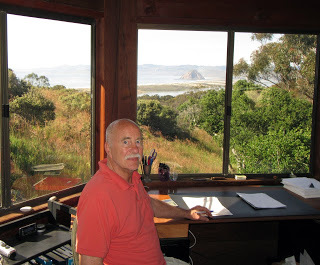
9. WAS IT DIFFICULT TO GET THIS BOOK PUBLISHED?
Yes! I’ve been working on this manuscript for decades, with many, many rejections. One literary agent had to pull out for personal reasons, and another simply up and died. Suddenly, and most unexpectedly, two professional societies simultaneously took an interest in it and decided to risk it. I say “risk” since the book doesn’t contain a single formula or mathematical symbol, and in places uses street language that editors would never dare publish in a traditional science book.
10. DID YOU HAVE THIS BOOK EDITED BEFORE PUBLICATION?
Yes, at two different stages I enlisted the help of professional editors, and this helped tremendously. Hillel Black, the publisher/editor for M*A*S*H, helped me see that underneath the collection of individual adventure stories was a thread that tied them all together, namely, my unique odyssey into and through science. Then Beth Rashbaum convinced me to reflect on how my worldview was shaped, and to share emotional details that enrich the original narrative. And of course the final publishers provided a copy editor.
11. WOULD YOU LIKE TO HAVE THIS BOOK MADE INTO A MOVIE?
That depends on how true-to-life the film would be, of course, and how well done. It would be a fine pleasure indeed to share some of these experiences with a completely different audience.
12. WHAT IS THE BEST THING ABOUT BEING A WRITER?
We have no bosses, and no constraints – the sky is the limit. I like to think that if I’d lived in prehistoric times, I would have been the revered village storyteller. Writing gives me the chance to be that storyteller on a much grander and more permanent scale.
13. WHAT IS IT ABOUT YOUR LIFESTYLE THAT FACILITATES WRITING?
No impedimenta. I’ve never been married or had children, never owned a TV or fancy car, and until I was sixty, never owned a house. I spent nearly thirty years living in condemned houses, enjoying the pleasures of a very simple life. Free to travel and take off whole years at a time to live in places like Amsterdam, Kauai, and Costa Rica.
14. DESCRIBE YOUR PERFECT DAY.
Start with an hour of strenuous exercise hiking or mountain biking in nearby Montaña de Oro state park, followed by a solid breakfast, catching up with correspondence, writing or revising for a couple of hours, a late lunch, more writing or brainstorming, playing dominoes and cribbage with my partner Erika, and watching an old movie.
15. DO YOU SUFFER FROM WRITER’S BLOCK?
Not really – I try to keep three different in-depth projects going at a time. When I burn out on one, I switch to another, and then back.
16. DO YOU HAVE A FAVOURITE WRITING PLACE?
Absolutely. I have a small rustic octagonal cabin, picture windows on all sides, overlooking Morro Bay, the open Pacific, and the Santa Lucia mountain range here on California’s Central Coast. It has electricity, running cold water, and a Swedish fire pit. So I alternate splitting firewood, pipe dreaming in the rocking chair, stoking the fire, and writing true first-hand adventure stories and mathematics.
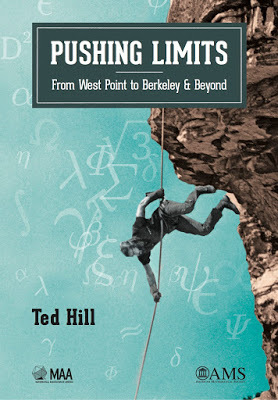
17. WHAT ARE YOU WORKING ON AT THE MOMENT?
I’m working on several more non-fiction books. One is a collection of travel adventures that did not fit into this memoir story line, including some harrowing experiences hitchhiking and picking up hitchhikers from Australia to Africa. Of course I am also working on several mathematics projects I find personally compelling, such as why beach stones have oval and not spherical shapes.
18. WHO IS YOUR FAVOURITE AUTHOR AND WHY?
Mark Twain, for his superb humor and storytelling. He even wrote a story in my own speciality of mathematical probability called Science vs. Luck.
19. OTHER THAN WRITING, WHAT ELSE DO YOU LOVE?
Friends are the greatest joy in my life.
20. DESCRIBE YOURSELF IN FIVE WORDS?
Sounds like a loaded question, but here goes – curious, creative, energetic, persistent, optimistic. Did I mention persistent?
21. WHAT WOULD MAKE YOU HAPPIER THAN YOU ARE NOW?
Learning that scientists have just made friendly contact with extra-terrestrials who have advanced science and art and music to share with us, and have learned how to live together in harmony.
22. ANYTHING YOU’D LIKE TO ADD?
Yes – I would like to thank you, Clancy, for this opportunity to share some of my thoughts with your readers. Best of luck to you and your readers on your own writing adventures! I hope you enjoy the ride as much as I do.

WEBSITE
BOOKSTORE
Author interview with Mike Breen:
https://www.youtube.com/watch?v=p3KyWZ5AsoI

Clancy's comment: Thanks, Ted. Well done. It's been a pleasure.
I'm ...

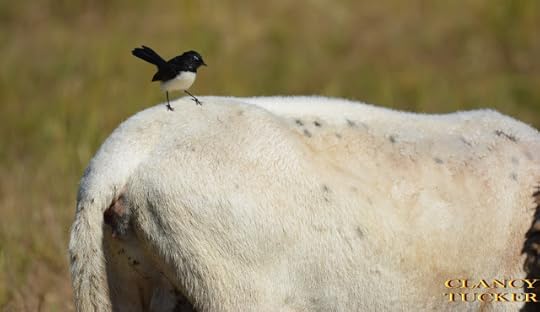
Published on July 08, 2017 18:17
July 7, 2017
8 July 2017 - KEITH URBAN - AUSSIE COUNTRY SINGER
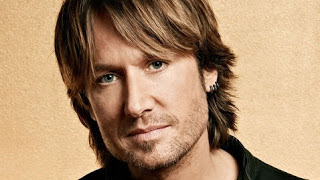
KEITH URBAN - AUSSIE COUNTRY SINGER -
G'day folks,
Welcome to the life of an Australian country singer. Keith Lionel Urban is a New Zealand-born Australian country musician. In 1991, he released a self-titled debut album and charted four singles in Australia before moving to the United States the following year.
Grammy-award winning country music singer, songwriter and guitarist Keith Urban was named the Country Music Association's Entertainer of the Year in 2006.
Synopsis
Keith Urban decided to pursue a solo career in the late 1990s. In 2000, he released his first, self-titled solo album. In 2001, he was named the CMA's "Top New Male Vocalist." He toured in 2004, and was named CMA's "Entertainer of the Year" the following year. Urban won his first Grammy Award in 2006, and went on to receive three more Grammys. In 2012, Urban was chosen as a new judge for season 12 of the popular singing-competition show American Idol, which premiered in 2013.
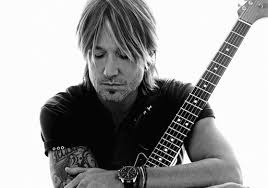
Early Life
Keith Lionel Urban was born on October 26, 1967, in Whangarei, North Island, New Zealand, and raised in Australia. The musician inherited a passion for American country music from his parents.
By the time he was a teenager, Keith Urban had won several talent shows and joined a country band. His signature style—a mix of rock guitar and country sound—emerged during those formative years. In 1988, he debuted his first album, which enjoyed success in his native Australia. It was time to cut his teeth in Nashville.
Success in Nashville Urban's first Nashville band, the Ranch, made a huge splash, and the group released a self-titled debut album in 1997 to commercial acclaim. Shortly thereafter, Urban decided to leave the band to pursue a solo career. His talents were quickly recruited by some of the biggest names in country music, including Garth Brooks and the Dixie Chicks.
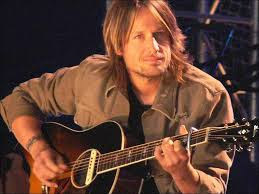
Solo Career
In 2000, Urban released his first self-titled solo album, which featured the No. 1 hit "But for the Grace of God." His second album, 2002's Golden Road, included two more No. 1 singles: "Somebody Like You" and "Who Wouldn't Want to Be Me." In 2001, he was named "Top New Male Vocalist" at the Country Music Association Awards.
After touring with the likes of Brooks & Dunn and Kenny Chesney, Urban headlined his own tour in 2004. The following year, he was named the CMA's "Entertainer of the Year," "Male Vocalist of the Year" and "International Artist of the Year." In early 2006, Urban won his first Grammy Award (best male country vocal performance) for "You'll Think of Me." Also in 2006, he was received the CMA's "Male Vocalist of the Year" and the Academy of Country Music's "Top Male Vocalist" honors.
In June 2006, Urban married actress Nicole Kidman in their native Australia.
Personal Issues
Urban's next album, Love, Pain & The Whole Crazy Thing, was released in the fall of 2006. Around the same time, the musician voluntarily checked himself into a rehabilitation facility. "I deeply regret the hurt this has caused Nicole and the ones that love and support me," Urban said in a statement, according to People magazine. "One can never let one's guard down on recovery, and I'm afraid that I have. With the strength and unwavering support I am blessed to have from my wife, family and friends, I am determined and resolved to a positive outcome."
While struggling personally, Urban continued to thrive professionally. His 2006 album spawned several hits, including "Once in a Lifetime" and "Stupid Boy," which won a Grammy for best male country vocal performance in 2008.
Later in 2008, Urban released a greatest hits collection and toured extensively. That summer, however, he took a break from his hectic schedule to celebrate a joyous event: He and wife Nicole Kidman welcomed a baby girl on July 7, 2008, and named her Sunday Rose Kidman Urban. "We want to thank everybody that has kept us in their thoughts and prayers," Urban wrote on his website shortly after Sunday Rose's birth. "We feel very blessed and grateful that we can share this joy with all of you today."
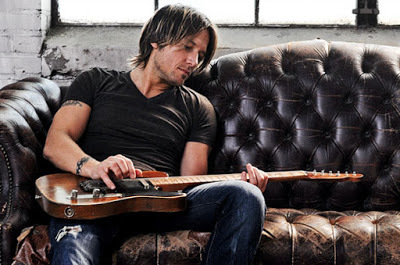
Continued Success Urban continued his string of hits with another album, Defying Gravity, which was released in March 2009 and debuted at No. 1 on the Billboard 200—his first album to do so. The lead single off the album, "Sweet Thing," immediately hit No. 1 on the Billboard charts. The album's second single, "Kiss a Girl," was performed during the season 8 finale of the singing-competition show American Idol, as a duet with the show's winner, Kris Allen.
In the fall of 2009, Urban performed at the CMA Awards and received several honors for his collaborative effort with country artist Brad Paisely: "Start a Band." He was also named country music's "Favorite Male Artist" at the American Music Awards. In 2010, Urban received his third Grammy Award (best male country vocal performance), for the song "Sweet Thing." He nabbed his fourth Grammy (best male country vocal performance) the following year, for the single "'Til Summer Comes Around."
In 2012, Urban was chosen as a new judge for season 12 of American Idol, premiering in January 2013. Urban starred alongside Randy Jackson, Mariah Carey and Nicki Minaj in his debut season on the show. More recently, he has worked alongside Jennifer Lopez and Harry Connick Jr. to help find the country's best performers.
Away from American Idol, Urban has maintained his own career as one of country music's most popular stars. He released Fuse in 2013, which included "We Were Us," a duet with Miranda Lambert. "Cop Car" and "Somewhere In My Car" were two other successful songs from this album.
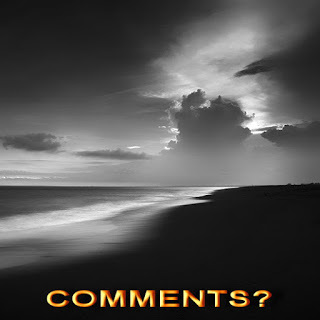
Clancy's comment: Many of our stars were born in another country, but we happily claim them. Love ya work, Keith!
I'm ...
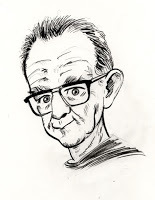
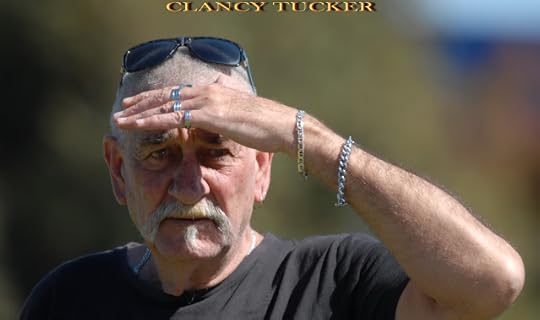
Published on July 07, 2017 21:04
July 6, 2017
7 July 2017 - ABANDONED CHURCH IN LONDON
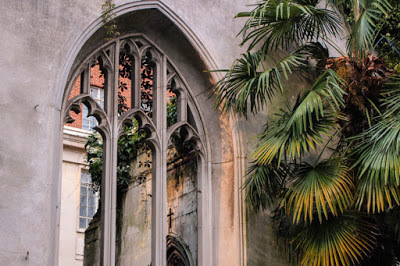
ABANDONED CHURCH IN LONDON
G'day folks,
A short walk from Monument tube station, in a side street of the City of London, lies St-Dunstan-in-the-East. This abandoned church has been converted into a garden open to the public, which remains largely undiscovered despite its location. Tucked away from skyscrapers like the Shard and Walkie Talkie, this unexpected gem is a surprisingly peaceful place for reflection and escape from central London at a time when its citizens perhaps need it most…
Surrounded by a grade-two listed Victorian wall, the original St Dunstans church dates back to 1100. The church suffered damages in the 1666 Great Fire of London but was partially rebuilt, with many of the original medieval structure remaining. Sir Christopher Wren, famous for redesigning the majority of central London after the Great Fire, added a steeple known as the Wren Tower in 1695-1901. Further renovations in the 19th century updated the surrounding Portland stone walls, and added a vault.
It was only during the Blitz in World War II that the church was damaged beyond repair, along with many other buildings in the surrounding area. In 1941, the building was bombed extensively, leaving only the Wren Tower and some outside walls standing. It was decided that the church should not be rebuilt after the war. It lay as a wreck until the 1960s, when the City of London council decided to transform the ruins into a garden for the public.
The ruins of the old church now support an array of flowers, trees and wall climbers, overlooked by the Wren Tower. A small fountain and benches make this a perfect place to relax, and a great architectural use of a small, destroyed plot of land in a built-up area. This beautiful public space stands as a memory of the history of London, its struggles, and a symbol of its resilience.
Busiest at lunchtime on weekdays, the garden is almost deserted on the weekend. Occasional church services are still held in the garden, including the Palm Sunday service every Easter. It is open from 7am to dusk. Next time you’re in London, discover this oasis for some momentary peace and relief from the chaos of life.
Now, check out some photographs.



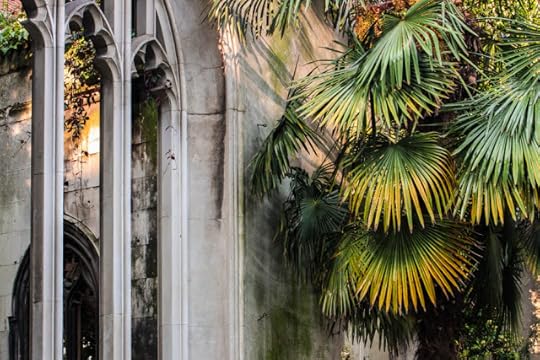
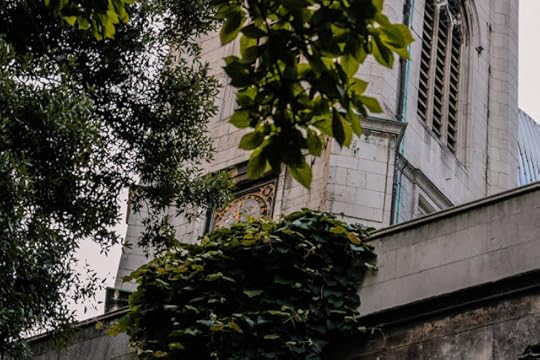


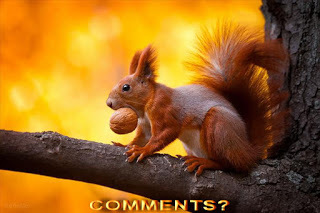
Clancy's comment: Amazing, eh? Built in the 1100's. A true survivor.
I'm ...
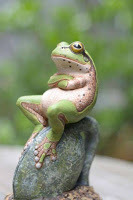

Published on July 06, 2017 14:38
July 5, 2017
6 July 2017 - LOST WORDS

LOST WORDS
G'day folks,
Welcome to some more lost words.
keleusmatically adv 1885 -1885 imperatively; in an imperative mood "Sit down!" the teacher instructed his wife keleusmatically, to her chagrin.
kexy adj 1608 -1884 dry, brittle, withered The rustling of the kexy leaves alerted the campers to the bear's presence.
krioboly n 1850 -1882 sacrifice of many rams; bath in blood of rams Contrary to rumour, pagan rituals do not involve krioboly or baby-eating.
labascate v 1727 -1727 to begin to fall or slide He watched with helpless horror as the baby carriage labascated down the stairs.
lagenarious adj 1657 -1657 flagon-shaped He brought our champagne in a lagenarious vessel, much to our embarassment.
lambition n 1658 -1800 act of licking or lapping The child's lambition of the ice cream was interrupted by gravity, the cruellest master.
lampistry n 1874 -1874 art of decorating lamps The church bazaar is always full of skilled needlework, lampistry and other crafts.
lardlet n 1659 -1659 small piece of bacon to put into meat to enrich with fat The secret to her pot roasts is the use of lardlets to enhance the flavour of the meat.
latibule n 1623 -1691 hiding place The girl emerged triumphantly from her latibule, only to find her friends had already left.
leeftail adj 1674 -1869 in great demand; having a quick sale The new Corvettes are a leeftail product, no doubt because of the economic boom.
legatarian adj 1766 -1766 of or pertaining to a deputy or legate The vice-president seems uncomfortable with his legatarian duties.
leporicide n 1788 -1914 killer or killing of hares or rabbits Elmer Fudd's futile attempts at leporicide were always foiled by his intended prey.
lignatile adj 1855 -1855 living or growing on wood She collected lignatile mushrooms on her hike, confident in her identifications.
lignicide n 1656 -1656 woodcutter We will not tolerate the lignicides who would despoil our old-growth forests!
lococession n 1656 -1656 place for giving Deposit your alms in the lococession we have provided, and you will be rewarded.
locupletative adj 1802 -1812 tending to enrich Your locupletative contributions have helped furnish the new stadium lavishly.
logarithmotechny n 1724 -1775 the art of calculating logarithms lubency n 1623 -1669 willingness; pleasure My lubency to help you in this matter will not be increased by your paltry bribes.
lugent adj 1656 -1889 weeping; mourning After hearing of the attack, her brothers were lugent at first, then enraged.
Lutherolatry n 1859 -1883 worship of Martin Luther and his teachings The priest was poorly received for his denunciation of Lutherolatry and paganism.
macellarious adj 1656 -1656 pertaining to butchers or meat markets Some practitioners of the macellarious arts are more humane to animals than vegans.
magastromancy n 1652 -1652 magical astrology Her reliance on magastromancy to decide the students' grades got her in trouble.
magistricide n 1670 -1670 the killing or killer of a teacher or master While many have considered magistricide, few are bold or wicked enough to do so.
magophony n 1711 -1711 massacre of magi or priests The acts of magophony that accompany religious intolerance are simply unacceptable.
maleolent adj 1657 -1727 having an ill odour His maleolent recipe was avoided by all but the most courageous or polite guests.
mancation n 1727 -1727 maiming; mutilation The general would suffer no mancation or execution of fallen enemy troops.
mariturient adj 1765 -1765 eager to marry He was beset with offers from several distant cousins who were desperately mariturient.
mecography n 1603 -1890 measurement of the dimensions and weight of body parts The condom company used mecography to obtain necessary data about its clientele.
medioxumate adj 1723 -1723 of gods of intermediate rank between those of heaven and of hell Medioxumate deities such as those of the Greek pantheon are rarely worshipped today.
melanochalcographer n 1697 -1697 engraver of copper printing plates No melanochalcographer can match a photographic print in quality of reproduction.
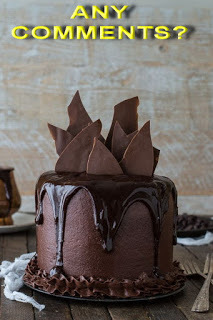
Clancy's comment: Mm ... Understandably lost.
I'm ...


Published on July 05, 2017 15:16
July 4, 2017
5 July 2017 - BRILLIANT BLACK AND WHITE PHOTOGRAPHY
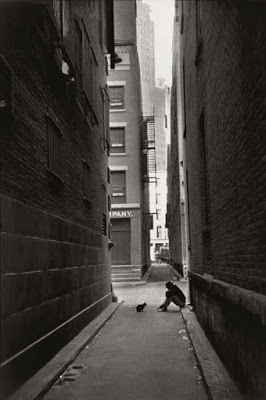
BRILLIANT BLACK ANDWHITE PHOTOGRAPHY
G'day folks,
You know I love black and white photography. Hope you do too. Check out these fabulous shots from yesteryear.

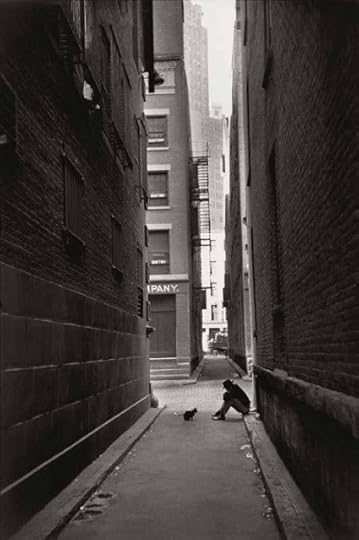

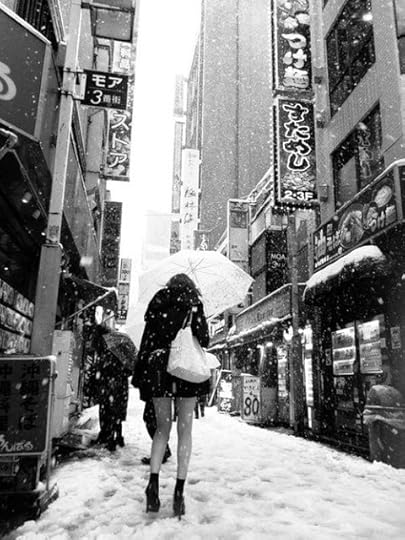
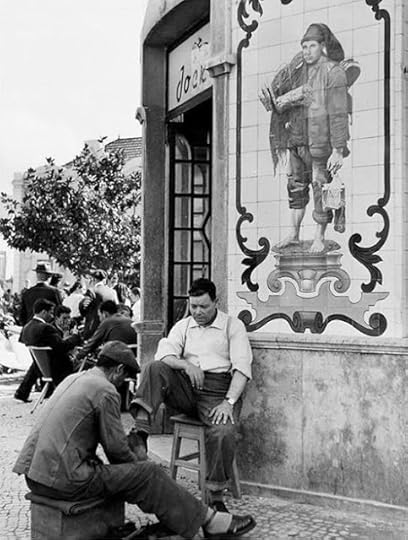
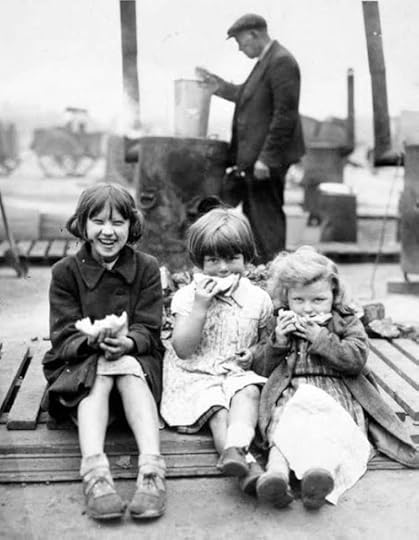





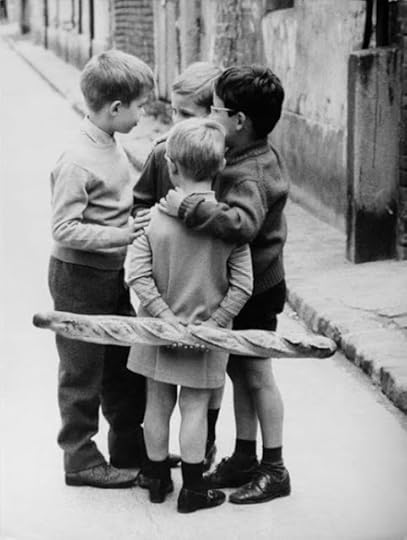



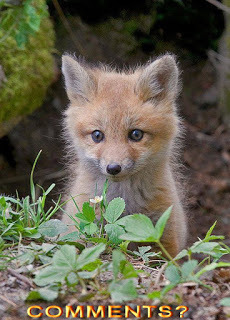
Clancy's comment: I love seeing the kids in these old shots.
I'm ...


Published on July 04, 2017 14:58
July 3, 2017
4 July 2017 - ONE-LINERS TO USE

ONE-LINERS TO USE
G'day folks,
Time for a bit of humour to get you started.
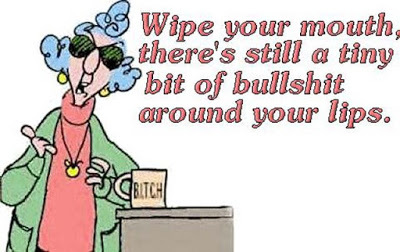

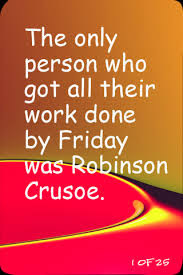
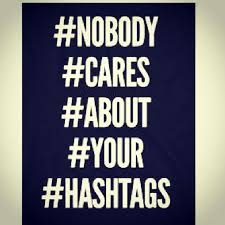
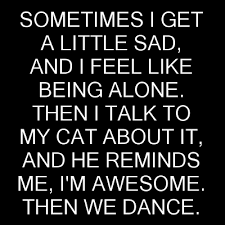


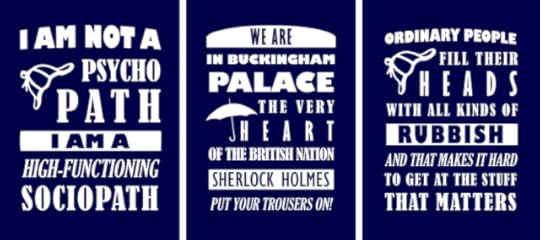



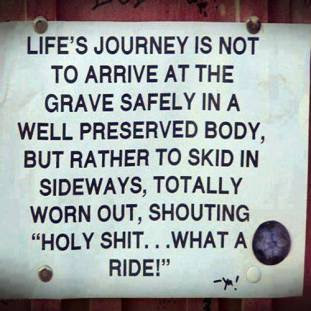
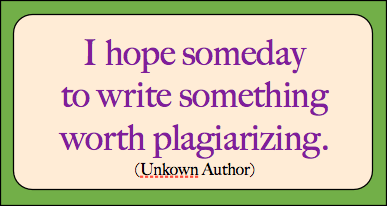
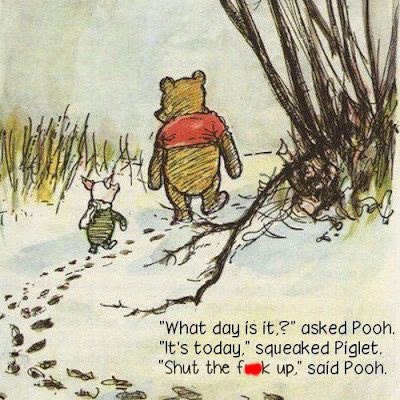
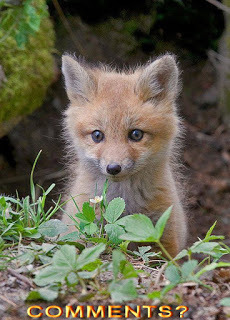
Clancy's comment: I hope some of these brought a smile to your dial.
I'm ...

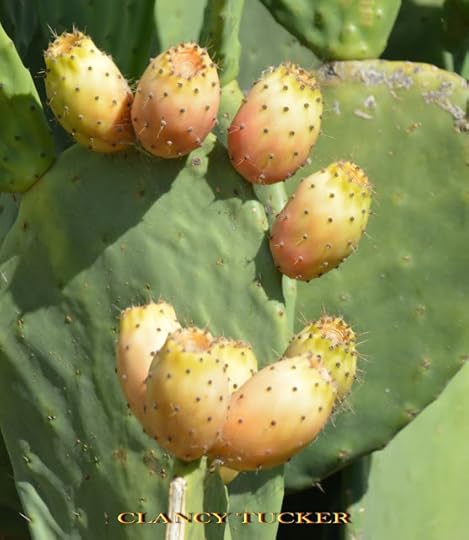
Published on July 03, 2017 14:47
July 2, 2017
3 July 2017 - HEATH LEDGER
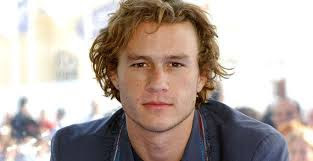
HEATH LEDGER
G'day folks,
Heathcliff Andrew Ledger was an Australian actor and director. After performing roles in several Australian television and film productions during the 1990s, Ledger left for the United States in 1998 to develop his film career. Heath Ledger was an Academy Award-winning, Australian actor best known for his roles in Brokeback Mountain and The Dark Knight. Sadly, he died of an accidental prescription drug overdose in 2008.
Synopsis
Heath Ledger was born on April 4, 1979, in Perth, Australia. His breakout role was in the film 10 Things I Hate About You with Julia Stiles. Ledger received Academy Award and Golden Globe nominations for his role in Brokeback Mountain. In 2008, after completing filming on Christopher Nolan's The Dark Knight, Ledger died as the result of an accidental prescription drug overdose. He received a posthumous Best Actor Academy Award for his performance as "The Joker." Ledger had a daughter with actress Michelle Williams.
Early Life
Heath Ledger was born on April 4, 1979, to mother Sally Ledger Bell, a french teacher, and father Kim Ledger, a racecar driver and mining specialist. He and his sister, Katherine, were reportedly named after two main characters in Emily Brontë's Wuthering Heights. He also had two half sisters: Ashleigh Bell and Olivia Ledger, both of whom were born into his parents' second marriage. But Ledger's closest family relationship was with Katharine, whom he later credited for spurring his acting career.
Early in life, Ledger found a passion for playing chess. At the age of 10, he won Western Australia's Junior Chess Championship. It was around this time that he found an interest in becoming a stage performer, as he performed the lead role in Guildford Grammar School's production of Peter Pan.
Unfortunately, while Ledger was enjoying this busy life of a 10 year old his parents found themselves growing apart. That same year, his parents would separate and ultimately get divorced when Heath was 11. He found emotional release in acting, choreography and dance and continued seeking out roles in his grammar school. He also tried his hand on the big screen as an extra in the movie Clowning Around, and later appeared in the TV series Ship To Shore.
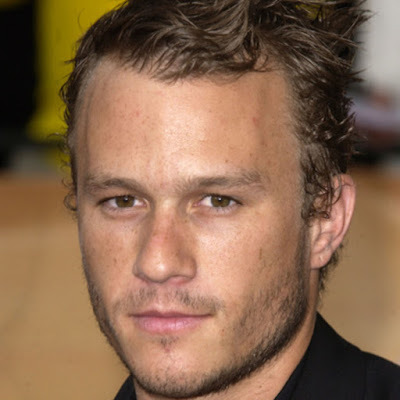
Making it in Hollywood
At age 16, Ledger completed his early graduation exams, and he traveled cross-country to Sydney to pursue an acting career with his long time friend Trevor DiCarlo. He had worked various, small roles in television, and his feature film debut came in 1997 in the emotional drama Blackrock. This led to a starring role in pilot series Roar; a medival fantasy costarring Keri Russell and backed by Financiers in the United States. The series was nominated for several awards and exposed Ledger to American audiences and Fox executives. On the urging of then-girlfriend Liza Zane (who also appeared in the series,) Heath sought out an American agent and followed Zane back to Los Angeles at the age of 19.
In 1999, he was fully exposed to an international audience with his breakout role opposite Julia Stiles in 10 Things I Hate About You. The film was a cult success among younger audiences. Despite his young age and relative inexperience, he was soon beating out the Hollywood elite for major roles in blockbuster films. Mel Gibson cast him as his son Gabriel Martin in The Patriot(2000.) His talent was tested in the lower budget Monster's Ball (2000) opposite Billy Bob Thorton. And the highly experimental A Knight's Tale(2001) displayed Ledger's abilities as a true leading man. His exposure in these films, coupled with his growing reputation as a Hollywood playboy, led Peoplemagazine to name Ledger one of it's "50 Most Beautiful People" in 2001.
'Brokeback Mountain'
He worked steadily on many independent films unitl 2005 when he was once again thrust into the spotlight with his contribution to one of the most controversial films to date. Ledger received "Best Actor of 2005" awards from both the New York Film Critics Circle and the San Francisco Film Critics Circle for his performance in Brokeback Mountain. In the film, Ledger plays ranch hand Ennis Del Mar, who has a life long love affair with aspiring rodeo rider Jack Twist, played by Jake Gyllenhaal. He also received a Golden Globe nomination for Best Actor in a Drama, and an Academy Award nomination for Best Actor for his performance—making him, at age 26, the ninth youngest nominee for a Best Actor Oscar.
It was on the set of Brokeback Mountain that Ledger met actress Michelle Williams. The two began a whirlwind relationship, and their daughter (Matilda Rose) was born on October 28, 2005 in New York City. Matilda Rose's godparents are Ledger's Brokeback co-star Jake Gyllenhaal and Williams' Dawson's Creek(1998-03) castmate Busy Philipps. Problems with paparazzi in Australia prompted Ledger to sell his residence in Bronte, New South Wales, and move to the United States, where he shared an apartment with Williams in Brooklyn, from 2005 to 2007. In September 2007, Williams' father, Larry Williams, confirmed to Sydney's Daily Telegraph that Ledger and Williams had ended their relationship.
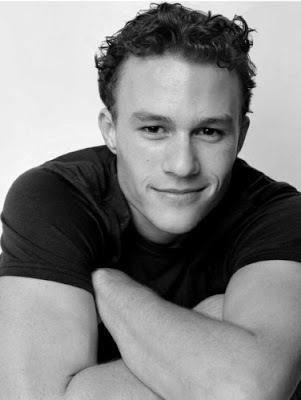
Tragic Death
On January 22, 2008, Ledger was found unconscious in his bed by his housekeeper, Teresa Solomon, and his masseuse, Diana Wolozin, at his apartment in the SoHo neighborhood of Manhattan. According to police reports, Wolozin used Ledger's cell phone to call Ledger's friend, Mary-Kate Olsen, for help.
Emergency medical technicians arrived at Ledger's apartment at 3:33 p.m., but were unable to revive him. At 3:36 p.m., Ledger was pronounced dead and his body was removed from the apartment.
Soon after Ledger's death reached the news, erroneous reports began to surface, claiming that the apartment he was in belonged to Mary-Kate Olsen. Olsen did not and had never owned the apartment, however. It was later reported by Peoplemagazine that Diana Wolozin (who found Ledger unconscious) had called Olsen before calling authorities because Olsen and Ledger had been casually dating in the months before his death.
Ledger had told The New York Times in November of 2007 that he was taking Ambien, a prescription medication used for the short-term treatment of insomnia. He discussed the difficulty that he was having with portraying The Joker in Batman sequel The Dark Knight (2008), a character he described as a "psychopathic, mass-murdering, schizophrenic clown with zero empathy."
"Last week I probably slept an average of two hours a night," Ledger told the Times. "I couldn't stop thinking. My body was exhausted and my mind was still going." It is believed that the young star's death was caused by an overdose of the sleep aid, combined with various other prescription drugs found in his system post-mortem. The coroner report ruled his death an accident.
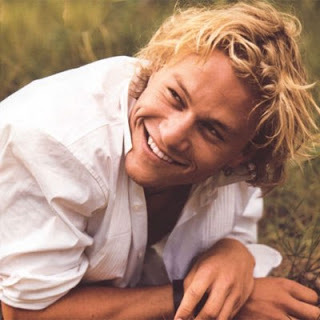
Posthumous Works
Before his unfortunate passing, Heath Ledger completed filming The Dark Knight, and the blockbuster that was rumored to have been Heath Ledger's Oscar winning performance opened in U.S. theaters on July 18, 2008. The film grossed more than $400 million in 18 days.
At the time of his death, Ledger was filming Terry Gilliam's The Imaginarium of Doctor Parnassus (2009). Scenes that placed Ledger in a realistic world had been completed in London. After his passing, Ledger's role was recast to have new actors portray his "physically transformed versions" in a magical realm, including Johnny Depp, Jude Law and Colin Farrell. The film is set to premier in 2009.
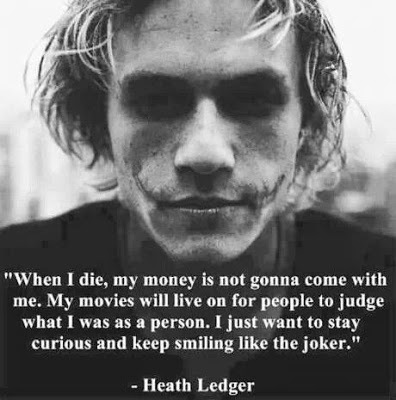
Ledger was posthumously awarded a Golden Globe and an Academy Award for Best Supporting Actor for his role as The Joker in The Dark Knight.
I Am Heath Ledger, a feature-length documentary celebrating his life using footage he had filmed himself, was released in theaters and aired on Spike in May 2017.
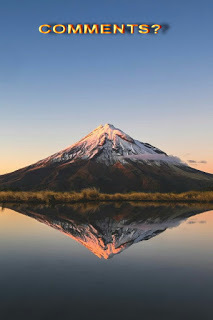
Clancy's comment: Another young man who left us too early.
I'm ...
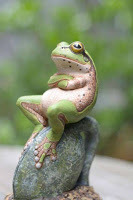
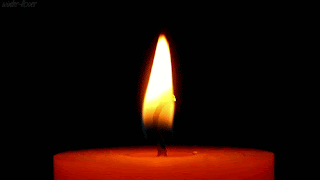
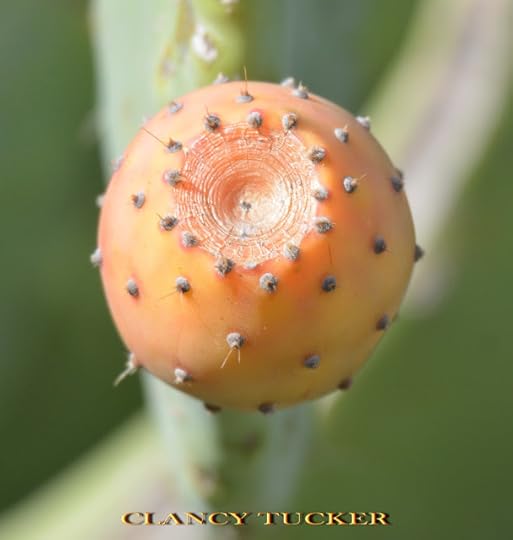
Published on July 02, 2017 14:57
July 1, 2017
2 July 2017 - MUMBAI'S OLD PARSI CAFES
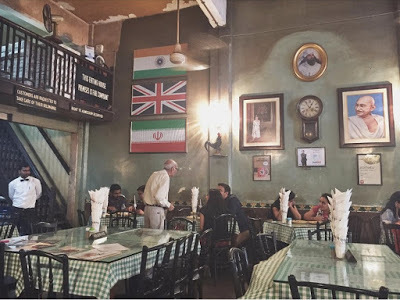
MUMBAI'S OLD PARSI CAFES
G'day folks,
Let's walk back in time.
P eeling walls, chipped ceilings and old, kitschy furniture, Mumbai’s grand old Parsi cafés haven’t changed much in over 100 years. Parsi, means Persian, a once thriving community in Mumbai that emigrated to India in the 19th century to avoid religious persecution in their homeland. Many of the settlers opened Iranian cafés, family-run businesses which became a symbol of the city’s diverse cuisine and culture. Once all the rage in Mumbai, at their peak there were 500 across the city, but today, with less than 20 cafés still in operation, they are slowly dying out, in danger of disappearing altogether.
Ageing café owners who took over their family businesses as early as the 1930s and 40s, are now struggling to see a future for their businesses as next generations are uninterested in taking over and more concerned with going abroad and seeking better careers elsewhere.
Once the perfect place to take shelter from the monsoon with traditional Persian snacks and the old-world ambiance, lovers of Persian food– and of time capsules– can only hope that the remaining cafés will keep serving their specialities as long as possible, before they truly become a part of history.
So if you’re ever in Mumbai, here’s a brief guide to some of those remaining time capsules …


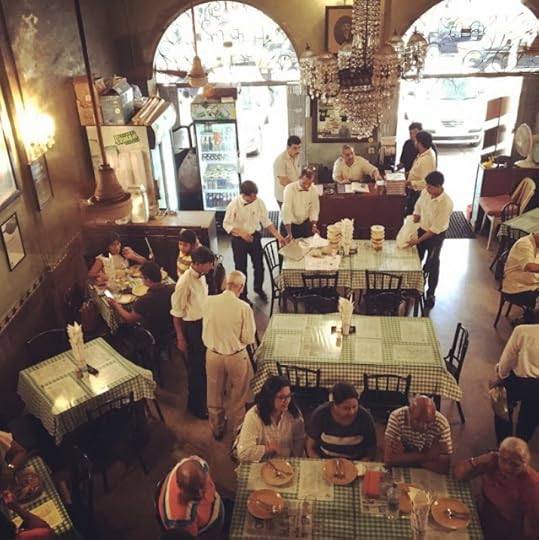



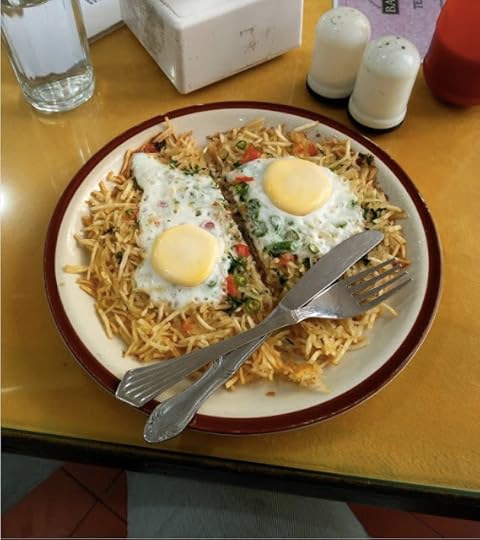





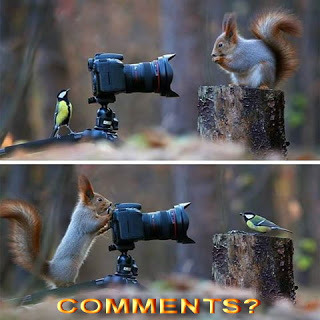
Clancy's comment: I still recall the magnificent old restaurants and cafes in Europe when I first visited. Magnificent, and so different to what I was used to.
I'm ...


Published on July 01, 2017 14:45



